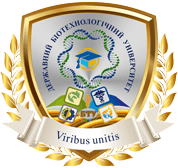Визначення токсичності наносполук Селену
Анотація
Метою даної роботи було дослідити токсичність препаратів Селену та пробіотику за внутрішньошлункового введення лабораторним тваринам, вагові коефіцієнти маси внутрішніх органів білих щурів, гематологічні показники крові білих щурів на 30-у добу досліду. При проведенні досліду було сформовано 3 групи білих щурів, які впродовж місяця отримували селеніт натрію з пробіотиком та біонаноселен за дози згодованих препаратів 1000, 3000 та 5000 мг/кг. При цьому враховували такі показники тварин, як зовнішній вигляд, поведінку, стан шерсті, видимих слизових оболонок, ставлення до корму, ритм, частоту дихання, час виникнення та характер інтоксикації, її важкість, перебіг, час загибелі тварин або їх одужання. Проведені дослідження засвідчили відсутність загибелі тварин чи захворювань за внутрішньошлункового застосування досліджуваних препаратів, що дає змогу віднести їх до 4 класу токсичності – малотоксичні речовини. При розтині не виявлено патологічних змін внутрішніх органів грудної та черевної порожнин та відсутність суттєвих змін у вагових коефіцієнтах маси печінки, серця, легень та нирок, у порівнянні з показниками контрольної групи, за 30-добового застосування досліджуваних добавок за одночасного зростання вагового коефіцієнту маси селезінки. У паренхіматозних органах не виявлено ознак запалення, порушень кровообігу і трофіки. Довготривале надходження досліджуваних засобів обумовило у дослідних тварин вірогідне зростання гематологічних показників (концентрації гемоглобіну, кількості еритроцитів та лейкоцитів, величини гематокриту). Проведене первинне токсикологічне дослідження є підґрунтям для створення та застосування малотоксичних, ефективних та екологічних препаратів для промислового птахівництва та тваринництва, що не спричиняють розвиток побічних ефектів.
Завантаження
Посилання
Arnaut, P. R., da Silva Viana, G., da Fonseca, L., Alves, W. J., Muniz, J. C. L., Pettigrew, J. E., ... & Hannas, M. I. (2021). Selenium source and level on performance, selenium retention and biochemical responses of young broiler chicks. BMC Veterinary Research, 17(1), 1-13. https://doi.org/10.1186/s12917-021-02855-4
Bityutsky, V. S., Tsekhmistrenko, S. I., Tsekhmistrenko, О. S., Tymoshok, N. O., & Spivak, M. Y. (2020). Regulation of redox processes in biological systems with the participation of the Keap1/Nrf2/ARE signaling pathway, biogenic selenium nanoparticles as Nrf2 activators. Regulatory Mechanisms in Biosystems, 11(4), 483–493. https://doi.org/10.15421/022074
Boostani, A., Sadeghi, A. A., Mousavi, S. N., Chamani, M., & Kashan, N. (2015). Effects of organic, inorganic, and nano-Se on growth performance, antioxidant capacity, cellular and humoral immune responses in broiler chickens exposed to oxidative stress. Livestock science, 178, 330–336. https://doi.org/10.1016/j.livsci.2015.05.004
El-Kazaz, S. E., Abo-Samaha, M. I., Hafez, M. H., El-Shobokshy, S. A., & Wirtu, G. (2020). Dietary supplementation of nano-selenium improves reproductive performance, sexual behavior and deposition of selenium in the testis and ovary of Japanese quail. Journal of advanced veterinary and animal research, 7(4), 597–607. https://doi.org/10.5455/javar.2020.g457
Israel, L. L., Braubach, O., Galstyan, A., Chiechi, A., Shatalova, E. S., Grodzinski, Z., Ding, H., Black, K. L., Ljubimova, J. Y., & Holler, E. (2019). A Combination of Tri-Leucine and Angiopep-2 Drives a Polyanionic Polymalic Acid Nanodrug Platform Across the Blood-Brain Barrier. ACS nano, 13(2), 1253–1271. https://doi.org/10.1021/acsnano.8b06437
Kaphle, A., Navya, P. N., Umapathi, A., & Daima, H. K. (2018). Nanomaterials for agriculture, food and environment: applications, toxicity and regulation. Environmental Chemistry Letters, 16(1), 43–58. https://doi.org/10.1007/s10311-017-0662-y
Lobanov, A. V., Hatfield, D. L., & Gladyshev, V. N. (2009). Eukaryotic selenoproteins and selenoproteomes. Biochimica et biophysica acta, 1790(11), 1424–1428. https://doi.org/10.1016/j.bbagen.2009.05.014
Misra, B. B., Langefeld, C. D., Olivier, M., & Cox, L. A. (2018). Integrated Omics: Tools, Advances, and Future Approaches. Journal of molecular endocrinology, JME-18-0055. Advance online publication. https://doi.org/10.1530/JME-18-0055
Panieri, E., Telkoparan-Akillilar, P., Suzen, S., & Saso, L. (2020). The NRF2/KEAP1 Axis in the Regulation of Tumor Metabolism: Mechanisms and Therapeutic Perspectives. Biomolecules, 10(5), 791. https://doi.org/10.3390/biom10050791
Senthil Kumaran, C. K., Sugapriya, S., Manivannan, N., & Chandar Shekar, B. (2015). Effect on the growth performance of broiler chickens by selenium nanoparticles supplementation. Nano Vision, 5(4–6), 161–168.
Staurengo-Ferrari, L., Badaro-Garcia, S., Hohmann, M., Manchope, M. F., Zaninelli, T. H., Casagrande, R., & Verri, W. A., Jr (2019). Contribution of Nrf2 Modulation to the Mechanism of Action of Analgesic and Anti-inflammatory Drugs in Pre-clinical and Clinical Stages. Frontiers in pharmacology, 9, 1536. https://doi.org/10.3389/fphar.2018.01536
Surai, P. F., Kochish, I. I., & Velichko, O. A. (2017). Nano-Se Assimilation and Action in Poultry and Other Monogastric Animals: Is Gut Microbiota an Answer?. Nanoscale research letters, 12(1), 612. https://doi.org/10.1186/s11671-017-2383-3
Tsekhmistrenko, O. S., Bityutskyy, V. S., Tsekhmistrenko, S. I., Kharchishin, V. M., Melnichenko, O. M., Rozputnyy, O. I., ... & Onyshchenko, L. S. (2020). Nanotechnologies and environment: A review of pros and cons. Ukrainian Journal of Ecology, 10(3), 162–172. https://www.ujecology.com/articles/nanotechnologies-and-environment-a-review-of-pros-and-cons.pdf
Tsekhmistrenko, S. I., Bityutskyy, V. S., & Tsekhmistrenko, O. S. (2020, May). Markers of oxidative stress in the blood of quails under the influence of selenium nanoparticles. In Impact of modernity on science and practice. Abstracts of XVIII International Scientific and Practical Conference. Boston, USA, 177–180. https://doi. 10.46299/ISG.2020.
Tsekhmistrenko, О., Bityutskii, V., Tsekhmistrenko, S., Kharchyshyn, V., Tymoshok, N., & Spivak, M. (2020). Efficiency of application of inorganic and nanopreparations of selenium and probiotics for growing young quails. Theoretical and Applied Veterinary Medicine, 8(3), 206–212. doi: 10.32819/2020.83030
Tu, W., Wang, H., Li, S., Liu, Q., & Sha, H. (2019). The Anti-Inflammatory and Anti-Oxidant Mechanisms of the Keap1/Nrf2/ARE Signaling Pathway in Chronic Diseases. Aging and disease, 10(3), 637–651. https://doi.org/10.14336/AD.2018.0513
Tymoshok, N. O., Kharchuk, M. S., Kaplunenko, V. G., Bityutskyy, V. S., Tsekhmistrenko, S. I., Tsekhmistrenko, O. S., Spivak, M. Y., & Melnichenko, О. М. (2019). Evaluation of effects of selenium nanoparticles on Bacillus subtilis. Regulatory Mechanisms in Biosystems, 10(4), 544-552. https://doi.org/10.15421/021980
СОУ 85.2-37-736:2011. Preparaty veterynarni. Vyznachannia hostroi toksychnosti. Kyiv: Minahropolityky.
Переглядів анотації: 881 Завантажень PDF: 794





